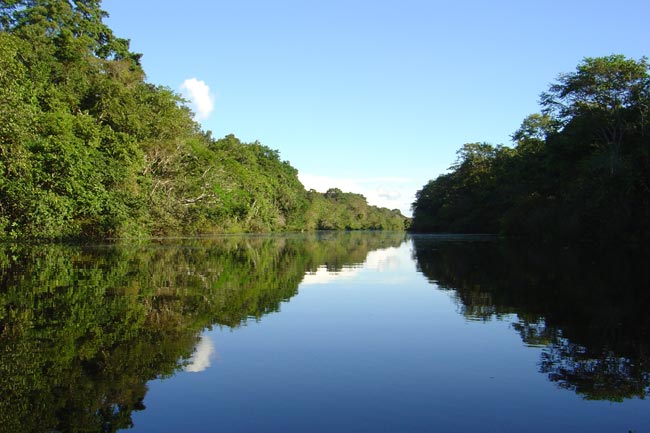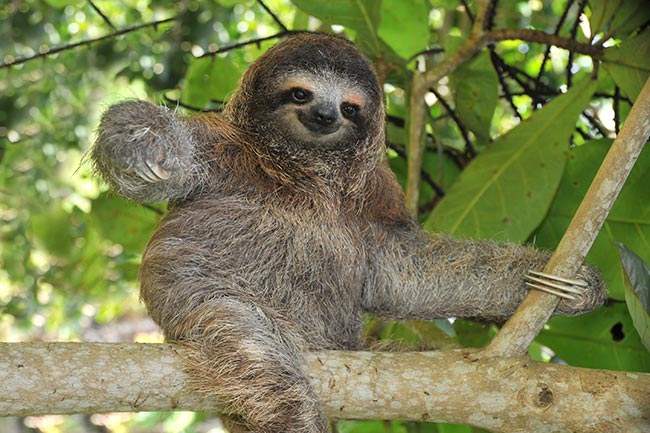The Amazon is often referred to as the “Lungs of the World”, and in Peru, this tropical region covers nearly 2/3rds of the country, yet it remains one of the least populated and protects an insane amount of flora and fauna diversity. Amp up your knowledge of Peru’s Amazon with these rainforest facts.
- Peruvian Amazon
- Flora and Fauna Species
- Weather
- Interesting Things About the Peruvian Rainforest and The Amazon
Peruvian Amazon
Location: The Peruvian Amazon is a region of the Amazon rainforest that is located in Peru, northwest of South America, east of the Andes.
photo
Peru’s Rainforest Region Consists of 5 Departments:
- Loreto, the capital: Iquitos
- Amazonas: Chachapoyas
- San Martin: Moyobamba
- Ucayali: Pucallpa
- Madre de Dios: Puerto Maldonado
Amazon Jungle Regions:
- Lowland Jungle: The first one is the largest region in Peru and has heights ranging from 260 to 1,300 ft (80 to 400 m). Its climate is warm (average temperature of 82°F/28°C), has a high humidity, and experiences extensive rainfall throughout the year. The Amazon River flows through lowland jungle through Putumayo, Ucayali, Marañón, Yavari, Napo, Tigre and Pastaza in Peru.
- Highland Jungle: Second, the high forest of Peru is located in the eastern foothills of the Andes with altitudes ranging from 1,300 to 3,280 ft (400 to 1000 m). The climate is cooler in the highland jungle, compared to the warmer temperatures in the lowland jungle. More isolated from the rest of the Amazon region and other regions, the habitat hosts an abundance of unique animal species.

Amazon River: The main water source of the Peruvian Jungle is the Amazon River. It’s the world’s largest and most extensive network of waterways, which is fed by the rivers of Ucayali and Marañon. The Amazon feeds more than 1,100 tributary rivers to its mouth in the Atlantic Ocean.
- The depth of the Amazon River varies from 30 to 100 ft (10 to 30 m)
- The width of the Amazon River varies between 1 and 10 mi (1.8 and 16km).
- The Amazon River flows a length of approximately 4,040 mi (6,500 km), of which 443 mi (713 km) run through Peru.
Flora & Fauna Species
The Peruvian Amazon is one of the most biodiversity regions on the planet.
Amphibians: 262
Birds: 806
Mammals: 293
Flowering Plants: 7,372
Ferns: 700
Fish: 697
Reptiles: 180

Weather
From a climatic point of view, the Peruvian Rainforest has three well-defined regions: the jungle, the high forest, and low jungle.
- The jungle is characterized by a tropical climate with an average annual temperature between 72°F and 79°F (22°C and 26°C), which makes it the wettest region of Peru.
- The high forest has a tropical climate with an average temperature of 88°F (31°C) and few temperature variations throughout the year, making it the hottest.
- The low jungle has a warm and humid, with rainfall no more than 3.000 mm.
Interesting Things About the Peruvian Rainforest and The Amazon
- More than half of Peru is covered by jungle and rainforests. In particular, the Amazon Rainforest is the most famous in the world. In fact, Peru is a member of the Amazonas, or a collection of four nations which the Amazon River passes through.
- Peru’s Rainforest contains thousands of indigenous plants and animals. Some plants are yet to be discovered, and some are even used in modern drugs to cure diseases.
- The Amazon River Basin is the largest rainforest in the world. This rainforest is located in the northeast section of Peru.
- More than 20% of Earth’s oxygen is produced in this area, thus the name “Lungs of the Planet.”
- With 2,5 million square miles, the Amazon rainforest represents 54% of the total rainforests left on the planet.
- Amazon rainforest birds account for at least one third of the world’s bird species, with the toucan being the most popular icon.
- More than half of the world’s estimated ten million species of plants, animals and insects live in the tropical forest.
- About 70% of plants found to have anticancer properties are found only in the rainforest.
- The number of edible fruits found in the rainforest is estimated in 3,000. Amazon natives consume more than 1,500, but only 200 are cultivated for use today.
- An estimated 90% of Amazon rainforest plants used by Amazon natives have not been studied by modern science.
- Today, the number is believed to be of around 250,000 Amazon natives, comprising 215 ethnic groups with 170 different languages. There may also be fifty or so Amazon tribes living in the depths of the Amazon rainforest that have never had contact with the outside world.